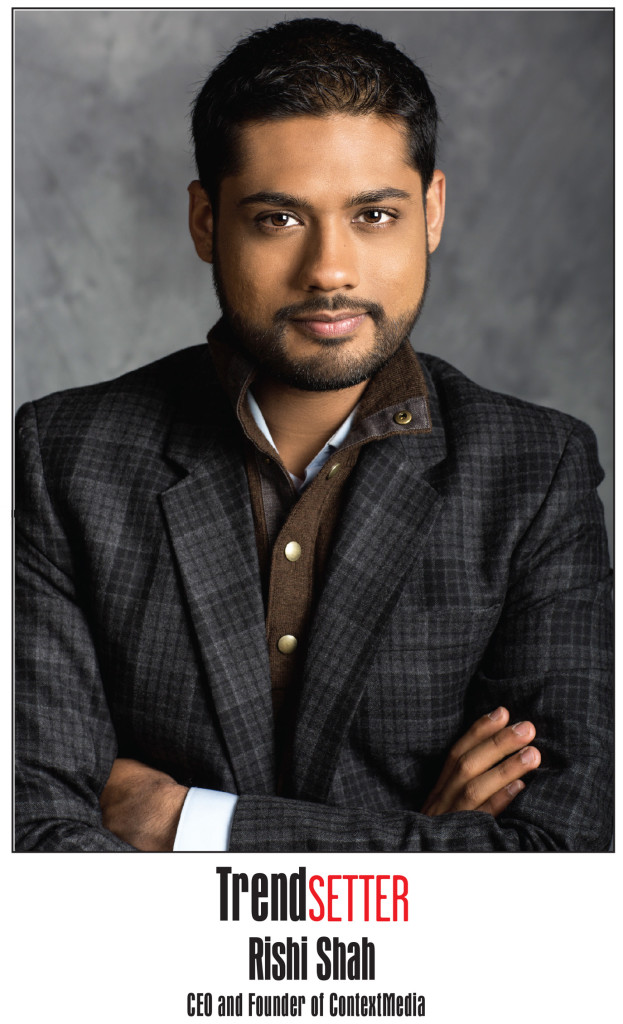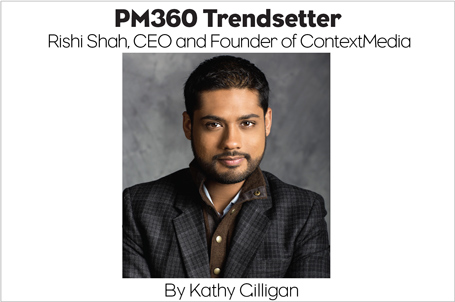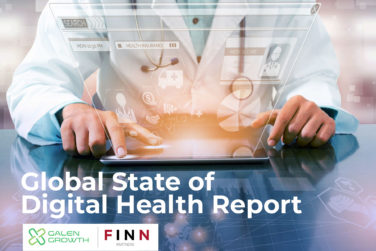Born in Chicago, Rishi Shah, CEO and Founder of ContextMedia, has been a successful entrepreneur and investor for most of his life. In 2006, he founded ContextMedia to improve outcomes for patients with rare diseases through a combination of technology and actionable content—a company that today serves all of the top 50 life science manufacturers and is still growing. Rishi spoke to PM360 about digital place-based networks, mobile media and innovative products for physicians and providers—and how to create patient behavior change, perhaps the biggest challenge of our time.
 PM360: Rishi, you have an interesting background. Would you like to tell our readers a little bit about it?
PM360: Rishi, you have an interesting background. Would you like to tell our readers a little bit about it?
Rishi Shah: Well, I started a company when I was 12 years old offering home computer services and consulting, which grew into quite an operation. I also began investing and trading derivatives when I was quite young, and both experiences made for great early entrepreneurial education. In 2006, while I was in college, we started ContextMedia.
What motivated you to start ContextMedia?
Three things came together to create ContextMedia. One was a lifelong passion for information and media. I have loved media, since I was a kid. The pen is mightier than the sword, right? We’ve never lived in a time in which that was more true. If you’re able to get information out there, you can change the way people behave. It’s a powerful thing.
Second, I loved technology. At the time, I was thinking through mobile devices and wondering if there was a way to serve information and media on people’s mobile devices while they were using it, to bring them contextual information. That’d be the Holy Grail, right? We could bring people information not just based on who they are, but also on what they were doing, when they were doing it and where they were.
Finally, I had a personal history with health in my family. My father is an endocrinologist. My grandparents and younger sister have diabetes. I never thought of going into healthcare, but when I read an article in The Economist about how different brands in retail served information on the go, I imagined this in healthcare.
What did you imagine from there?
If we could serve patients information in context—while they were receiving healthcare or just about to—we could really change people’s lives. So many people should be on an insulin pump, but are not. Many people should take cholesterol medication every day, but don’t do it. People should eat differently, yet don’t. If you can reach them at the right time, the right place, with the right message, you have all of the ingredients necessary to make real behavior change.
How do you change patient behavior? What makes that work?
A couple of aspects. One is that communication has to be targeted. And I don’t just mean, “If somebody has a heart problem, you ought to serve them content about their heart.” That’s true, but it also has to be targeted to their medical literacy, age, ethnicity, region, or a special diet or set of circumstances. It must be personalized. Then, importantly, information has to be actionable. If it’s just information, you can’t do anything with it.
I’m really interested in serving actionable information. It’s what you can talk to your doctor about, how you can develop a framework about getting the medication prescribed right after your appointment, or learn to shop healthier at the grocery store on the way home. But that’s the key: They’re all things you can act on now.
How can pharma marketers learn from your knowledge and experience?
Well, one of the keys we’re working on is enabling pharma marketers to embed content and promotion within the care continuum so it has context, credibility and actionability for the consumer. While generally, awareness marketing is good, I would urge pharmaceutical manufacturers to embed their promotion within that continuum—when patients are with their doctor or other points of care. Then you’re better able to help patients become compliant—and help the provider and the payer. It’s actionable for a patient rather than random. And frankly, it will create a higher ROI than anything else.
Okay. So, it’s point of care, and how do you think marketers are doing with that right now?
I think we’re just starting. For many years, point of care was the brochure, the paper or a wallboard. Marketers are starting to take advantage of new technology, but it’s still very early. One example: Our 3D digital anatomy boards—large 32-inch interactive displays installed in patient rooms that providers use during the patient appointment to pull up reference materials and show patients what’s visually going on. We’ve invested significantly in building partnerships with providers and health systems so that we’re able to bring deeper patient engagement opportunities (such as our mobile connect and oncology infusion suite table product) to them along with our life science partners. These are examples of adding promotion in a way that’s embedded into the care of the patient, rather than something that is fragmented or separate from the actual care. We’re passionate about wanting doctors’ offices to have the latest technology—and just beginning to actualize the potential of technology and content into the point of care.
Right. Providers are a big part of that.
Exactly. I think this next age is about tying it all together—rather than all the actors doing their own thing. We can work together to bring the provider, the payer and pharma into one continuum so that we almost can ladder up and convert patients into taking actions that improve their health—especially in chronic disease, where adherence and compliance is such a big issue.
Okay. So, Rishi, what gets you up in the morning?
One of the things that really gets me up is the opportunity to work on important things alongside people who have energy, positivity, purpose and have each other’s backs. And the pace of growth here gets me going. We’ve more than doubled our company every single year—we’re up 200% from last year. When you’re going that fast and can work with a team that you really enjoy being part of, the pace is very exciting and that gets you up. Also, we really believe we can improve health outcomes for patients by delivering this actionable information. That’s what it’s all about.







